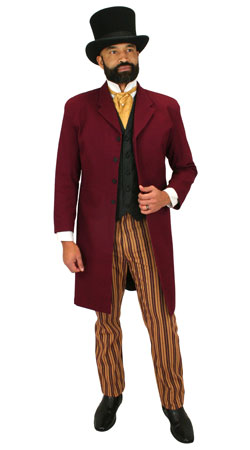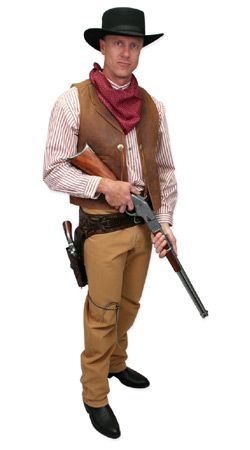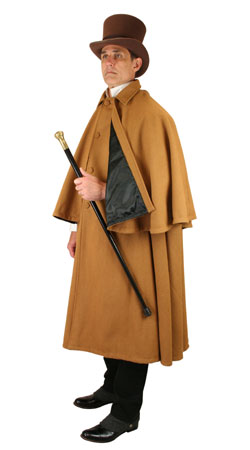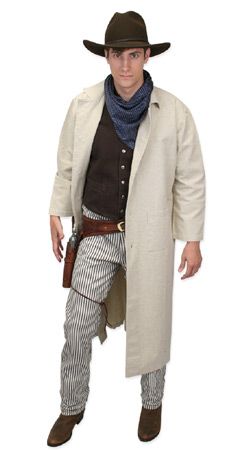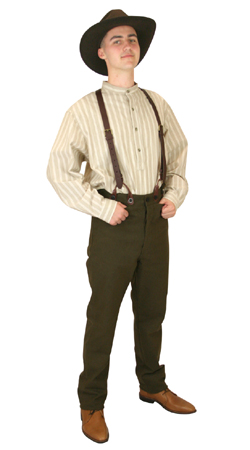Prices and Availability Subject to Change. Please call 800-997-4311 for more Information.

1880s Men's Clothing Guide
The 1880s saw the continued growth of factories and increased commercialization of new inventions. Karl Benz built the first practical internal combustion powered auto, though it was only three wheeled. Gottlieb Daimler created a gas engine motorcycle.
Although many workers worked low wage jobs in factories and sweatshops and made barely enough to support their families, the rise of factories and businesses created a slew of clerical jobs: secretaries, bookkeepers, and managers, which paid well and helped create a true middle class. These workers had excess income to spend on consumer goods, entertainment, and sports. All of which helped drive changes in men's wardrobes.
Mens 1880s Coats
The defining characteristics of coats during this decade is the move to higher necklines and slimmer silhouettes. In many cases the neckline of the coat was buttoned so high that you could see merely a glimpse of the shirt and vest.
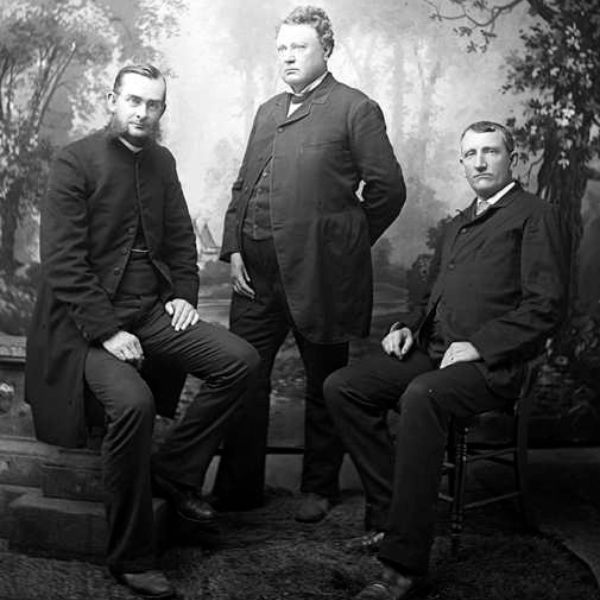
Cutaway Coats
The Morning/Cutaway Coat was the indispensable anchor of a man's wardrobe, replacing the Frock Coat as the common coat to wear for business and leisure activities. With its streamlined length the Cutaway Coat was lighter weight and allowed more freedom of movement.
The versatile Cutaway coat was single or double breasted with the tail length, fabric and color varying based on the occasion. For more formal occasions, the coat would be in a dark wool fabric with longer tails, but for leisure activities the tails would be shortened, and the coat made of tweeds, stripes, or herringbone patterns.
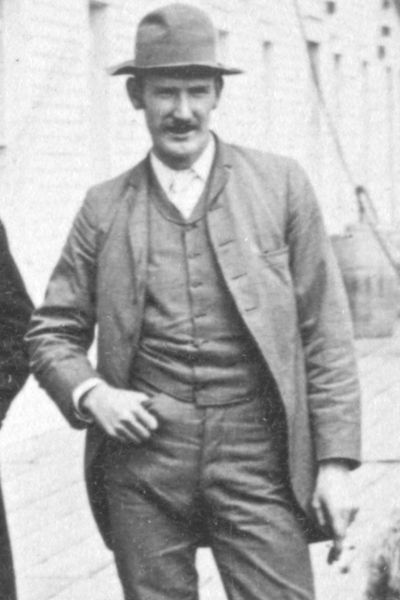
Frock Coats
The frock coat continued to be used for the most formal of daytime occasions and by members of the older generation. Even then, the frocks reflected the narrower silhouette and higher necklines of the decade.


Sack Coats
As the decade progressed the popularity of the Sack Coat and Sack Suit grew dramatically, and the sack coat became an acceptable option for daily business and leisure. For the newly minted middle class a 3-piece sack suit was a common choice for wearing to the office, though a cutaway was also acceptable.
Specialized forms of the sack jacket became popular for different sports as ladies and gentlemen pursued athletics in their leisure time. For summer sports such as lawn tennis, rowing and boating, a single breasted and brightly striped sack jacket was de rigueur. The Reefer, a double-breasted sack jacket, was another option for summer leisure activities.
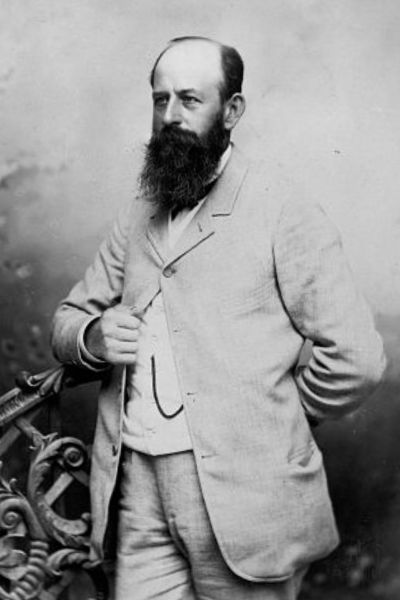


Norfolk Jackets
For country day wear, the Norfolk Jacket was most popular. This coat style first appeared in the 1860s and was designed for hunting and riding. A looser fitting jacket, the Norfolk has a belted waist and pleated back to allow for freedom of movement and featured large pockets for extra storage. It was often made of wool tweed and other durable materials and normally worn with loose knee breeches (knickers) and gaiters. By the 1880s, it was in common use for most casual activities like fishing and bicycling. [and walking the moorland according to the Tailor and Cutter, April 1888. ]


Overcoats and Cloaks
As was the case in the 1870s, overcoats such as the Chesterfield, Inverness and Ulster continued to be popular choices. The Inverness and Ulster often featured capes to provide extra warmth and protection.

Smoking Jackets and Robes
For leisurely at-home wear, the smoking or breakfast jacket was still in wide use. It was available in a variety of fabrics and colors with wide quilted silk or satin lapels.
In Strawbridge's 1883 Catalog, the price ranged from $12 to $25 for each quote, (equivalent to $368 to $768 in 2024 dollars!) Smoking Jackets weren't for the common man, but for the gentleman, they were a moment of comfort in their day.
Vests
As coat necklines move higher, so did the vest collar. It was also common for the vest to match the dark color of the coat.
Although shawl and notched collars were still seen on vests, collarless vests were becoming a more frequent choice during this decade for day and workwear both. A vest was still a required part of a man's wardrobe right up until the 1920s. Even farmers, railroad workers and hired hands wore practical vests made of denims and heavy twills as they went about their business.
Leisure and sports seemed to be one activity where vests were sometimes eschewed for comfort.



Trousers
Men's trousers followed the styling of coats to be narrow and more closely fitted and were button fly. Most often they were darker colors in both solid and stripes but often did not match the coat and vest. In fact, fashion plates show that men combined light colors or brightly striped pants with darker coats.
The rise in leisure activities and sports not only brought new types of coats but also increased the popularity of knickerbockers/knickers. These baggy loose fitting knee length breeches were the popular choice of hunters, golfers and bicyclists due to their lighterweight and ease of movement.
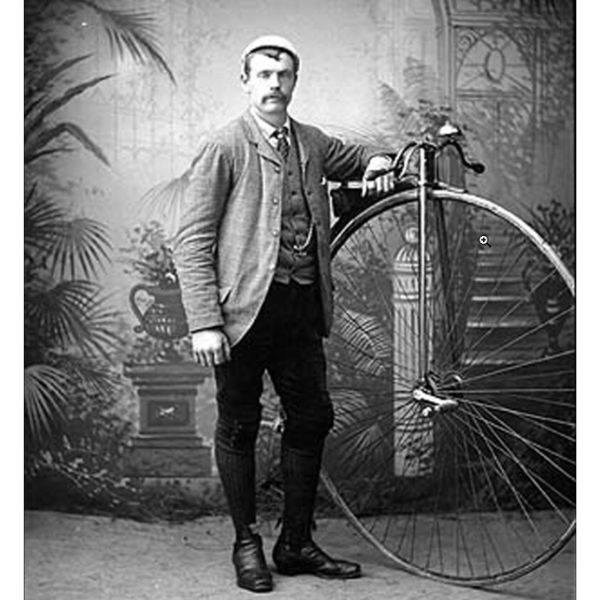
Shirts
Cotton and linen in stripes, patterns or all white were the shirt of preference during the 1880s. As technology advanced, more colors could be printed into one pattern, up from 8 colors in 1860 to 20 colors by the turn of the century.
Separate cuffs and collars were a common addition to shirts, particularly for office workers or men of limited means. They were more easily and inexpensively laundered and starched than the entire shirt, allowing a worker to maintain a neat appearance without having to spend an inordinate amount of money with the laundress. A gentleman would have approximately 6 sets to use in his many costume changes, whereas men of lesser means might have only 1 or 2.
The detachable bosom, shirt bosom or dickey as it was more commonly known was increasingly in use among the new class of office workers. This type of decorative shirtfront would be attached to a shirt collar and then tucked into the pants and could transform a work shirt to an evening dress shirt or hide a dirty shirt front. Dickies were commonly made of fabric or celluloid. As with standard shirt fronts, dickies could feature embroidery, ruffles, pleats, or any preferred style.

Another new-fangled style was coming of age in the 1880s and was met with some derision by the fashion police. That style was a full button front shirt. In Hints About Men's Dress, the author says,
"Some very particular men now have their shirts open all the way down, so that the hair will not be disarranged after it has been brushed by putting the shirt over the head. There is a good deal of the Miss Nancy about this."
Needless to say, his particular disdain for the style did not deter shirt makers, and within a few decades the pullover shirt would be nearly entirely replaced by full button front shirts.
Neckties
Knotted scarfs (or ties as we now call them) were common day wear in the 1880s. Some folded and tied as a "flat scarf" (or Puff Tie) or in a four-in-hand style. The four-in-hand could be a loose or tight knot depending on the preference of the gentleman. The season dictated the width of the four-in-hand: narrow in the summer and wider in the winter.
The flat scarf was preferred for high collared vests, likely to reduce the bulk of the tie under the vest, but four-in-hands were acceptable for those vests as well.







Hats
The derby/bowler hat became the most common hat for use with a sack coat or cutaway, in particular for gentleman conducting business. As with the shirt collars, the height of the hats grew throughout the decade and as dark suiting colors dominated, so did dark colored hats.
Light colored hats were available but only acceptable in summer months and were not to be worn after September 15th (at least in New York City). With the advent of Labor day in 1894, the date would move to the beginning of September.
The stiffer Homburg hat rose in popularity, due partially to Bertie, Prince of Wales being seen in the style.
For sports and summer wear, Straw Boaters were a popular style, as was the soft cap.
Shoes
Short boots, either laced or buttoned, in dark or black leather were a common choice. Shiny Patent Leather boots would be worn for formal events and were sometimes worn with light colored spats.
Shoes of a more modern style were worn for sporting such as boating and tennis, but not as standard day wear.
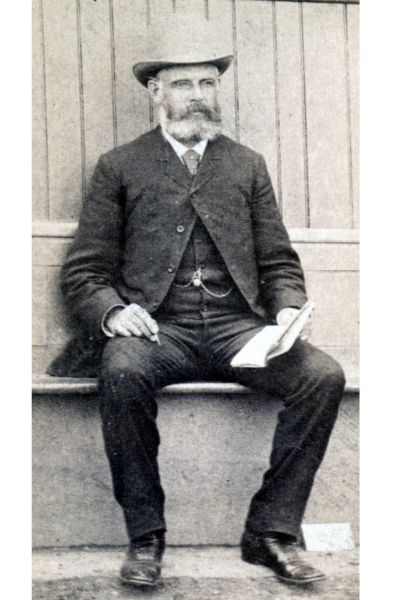
Evening Wear
Black tailcoats continued to be the standard for the most formal events and evening wear. The styling remained largely unchanged except for satin inset lapels and the use of a roll or shawl collar. The tailcoat was to be worn with a matching double breasted waistcoat with a low U front opening, which was in stark contrast to the high necklines of day wear. The white pleated or ruffle front dress shirt was a must as was a white silk bow tie Toward the end of the decade the use of Marseilles cotton material, also known as pique, became a popular alternative to linen. Matching trousers with narrowed legs and a silk top hat completed the look. The collapsible Gibus top hat was most popular for operas and theater events as the hat could be easily stowed during the show.
But a challenger to the tailcoat loomed on the horizon, the dinner jacket. Introduced by "Bertie" the Prince of Wales in the late 1860s, the jacket was short and designed to be worn for casual dinners at his residence.
Stories differ as to the actual origins, but the common moniker "Tuxedo" is said to have come from the 1886 Autumn Ball in the fashionable town of Tuxedo Park, NY. One version says Pierre Lorillard, a young socialite, had the tails of his coat removed and attended the ball. Another says a group of young men arrived in tailless coats with bright red vests and another says that the founders of the Tuxedo Park resort introduced the coat to their members. No matter the source, the Tuxedo got its start in the 1880s and grew to become the mainstay of men's evening formal wear.
In its early styling the tuxedo was black with a shawl collar and could have 0 to 2 buttons. The rest of the ensemble would mirror the styling of the standard tailcoat, but within a few decades the tuxedo would predominate formal events with black ties and notch collars.


Work Wear, Pioneer and Cowboy Frontier Fashions
As we have seen in previous decades, frontier clothing and workwear lags in fashion trends. Durability and function still outweighed au courant styling.
In the photos of frontier families living in sod houses, you see basic and well worn garments, though even the children are wearing cutaway and sack coats. At the blacksmith shop, the men are primarily, casually dressed in shirt sleeves and suspenders with only one vest and one jacket being worn.





Q&A About 1880s Men's Fashion
What did men wear in the 1880s?
What clothing was popular in the 1880s for men?
What did upper class men wear in the 1880s?
Complete Late Victorian Outfits
At Historical Emporium, we offer a full line of men's period clothing which are suitable for movie and TV production, theatrical, living history and performing arts requirements, and are also perfect for vintage weddings!
All of the products we sell are sold individually, but we have put together these full outfits to showcase the elements of late Victorian style for your consideration and inspiration.
Click any image for a close-up and a list of the products shown.





